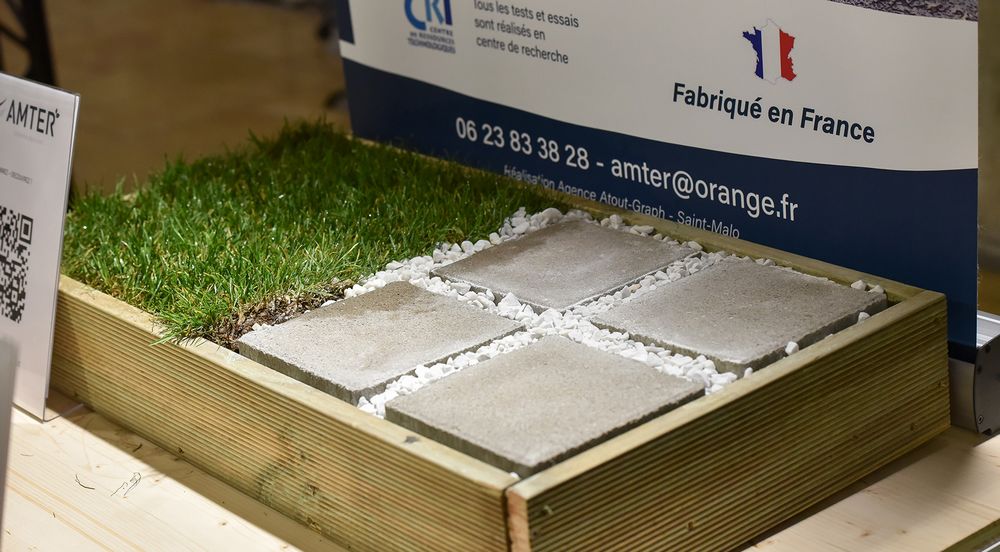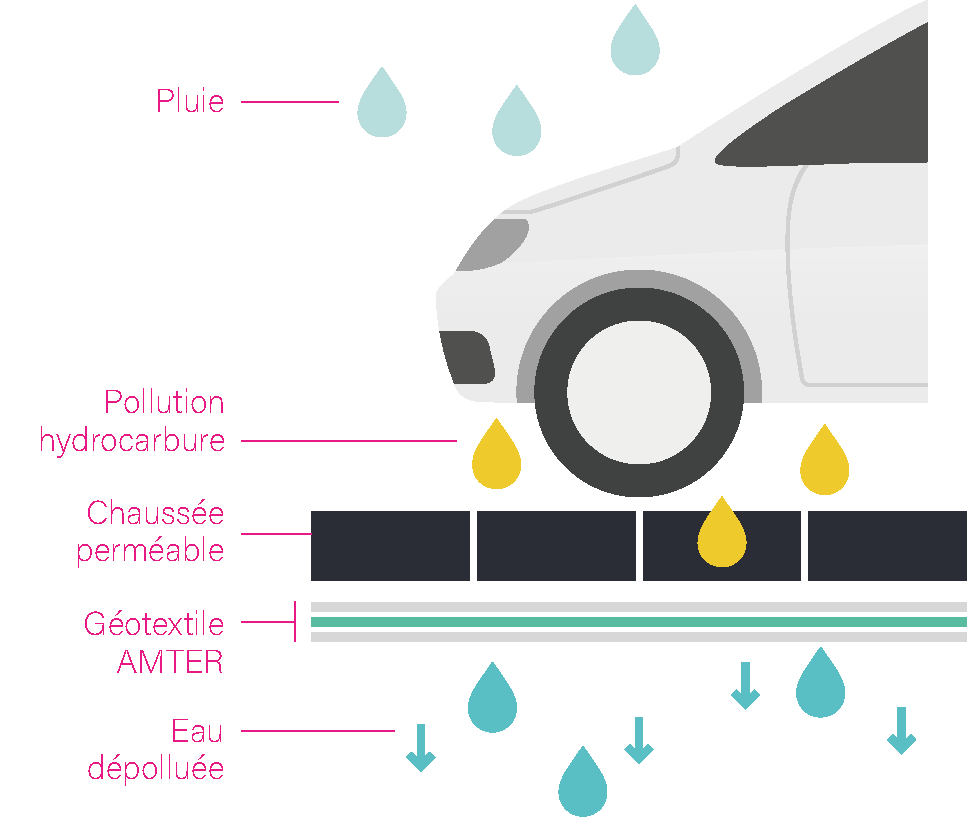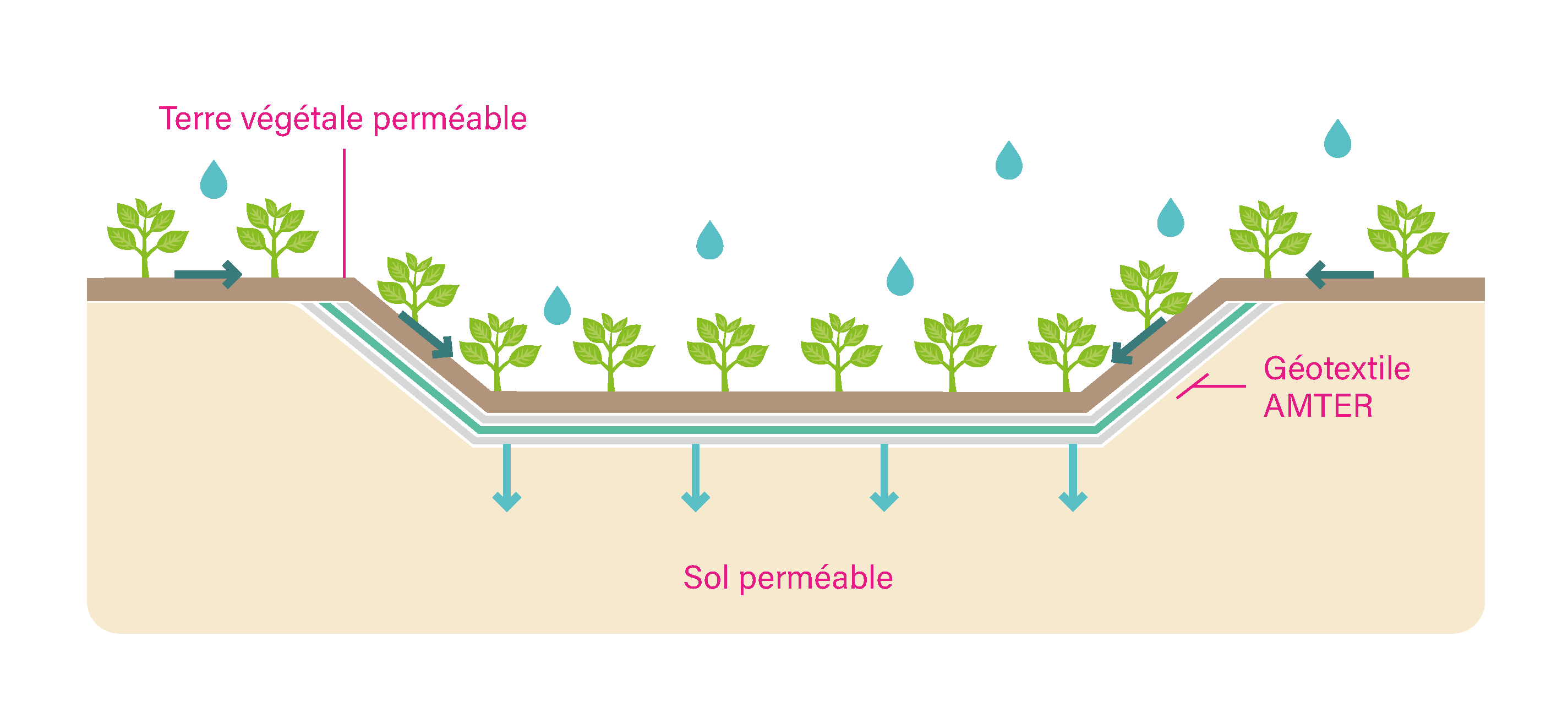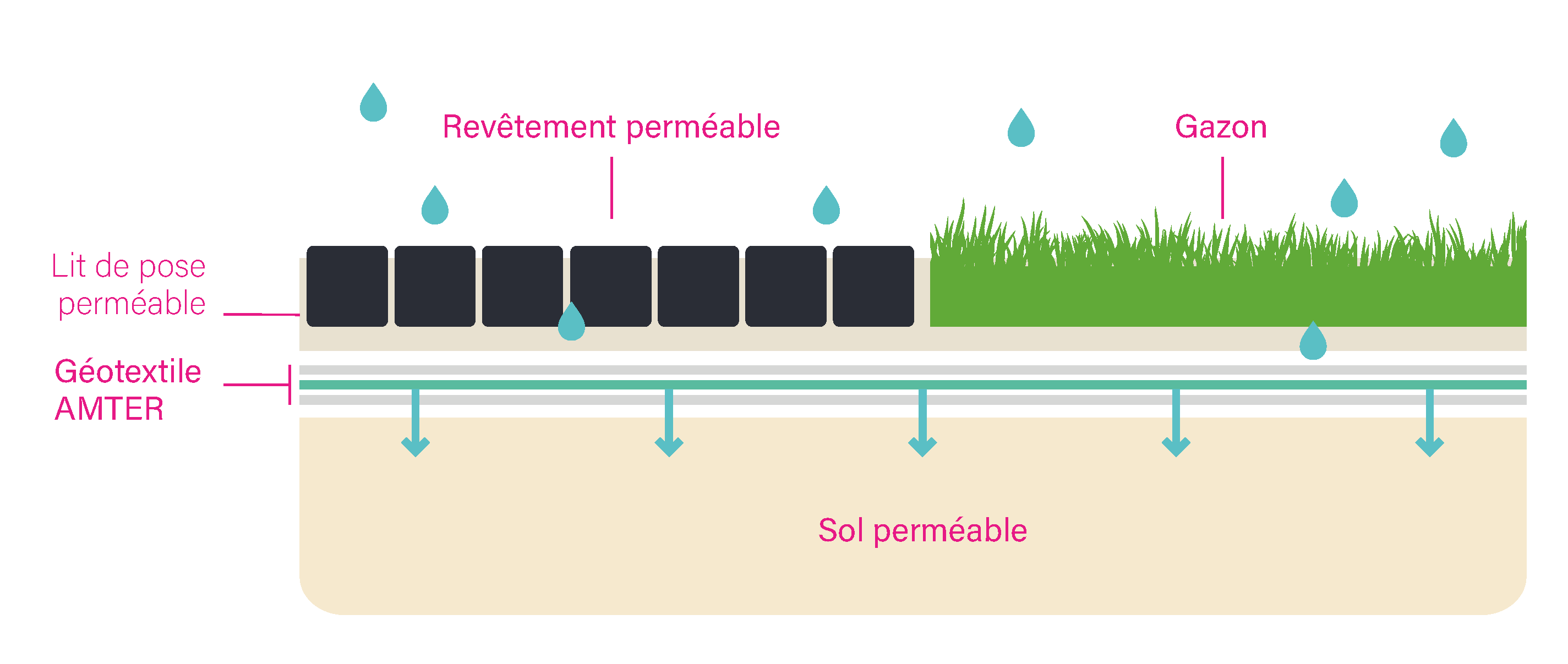AMTER geotextile, an ecological way to eliminate hydrocarbons from run-off water
We interviewed Amarande Industries who won a prize in the Paysalia Innovations Awards for its AMTER geotextile.

Amarande Industries specializes in vegetable or animal origin non-woven materials. It distinguished itself at Paysalia 2021 with its depolluting geotextile AMTER of great interest to local authorities to decontaminate soils. AMTER won the 2nd prize in the Paysalia Innovations Awards and top prize in the students’ award. Sales Manager Jean Marc LECOQ explains this innovation.

Amarande innovation on Paysalia 2021
© Photo credit: Nicolas Rodet
Briefly, tell us about your innovation
Jean Marc LECOQ: AMTER is three-ply geotextile which captures and naturally and durably biodegrades hydrocarbons. It is a maintenance-free ecological solution that eliminates hydrocarbons from surface (run-off) waters and is used under permeable zones like car parks, roadways and valleys… It was launched officially at Paysalia 2021 and we were very pleased to win a Paysalia Innovation Awards trophy and the “Students’ Favorite” prize too.
Paysalia Innovations Awards
Organized by Unep, these trophies reward innovative products and technologies created by companies marketing to professional landscapers to meet the needs of today - and tomorrow. They are awarded every two years at the Paysalia trade show.
Why did you feel the need to create this product?
Jean Marc LECOQ: Currently, large parts of our local areas are covered in non-permeable concrete, tarmac, asphalt, etc. and this causes flooding. We have been trying to maximize soil permeability for several years but the water which does finally manage to penetrate is dirty. Most impermeable sites (like tarmac-covered roadways) channel run-off waters to hydrocarbon separators for collection. We invented AMTER geotextile to treat hydrocarbons draining into permeable soils.
We suggest the adoption a repermeabilization strategy that returns surface water to its natural environment, but hydrocarbon - and maintenance - free using bioremediation of soils.
How does AMTER make it possible to do away with hydrocarbon processing?
Jean Marc LECOQ: we started out by looking at how nature handles the problem. If you pour a can of oil onto the ground, the earth cleans 15 to 30% of it, but 70% drains down into the water table. AMTER comprises three layers which collect, trap and treat this pollution with the help of a bacterial biomass.

How does your innovation use bacteria to decontaminate soils from hydrocarbons?
Jean Marc LECOQ: The top layer of our geotextile optimizes the conditions needed to create a microbial biofilm. It is specifically designed to help bacteria to develop and is 100% biodegradable over 3 to 4 years.
The middle layer provides a favorable habitat for this biomass - the bacteria settle durably into this customized “city”. As long as the infrastructure lasts, this layer uses the bacteria to filter hydrocarbons.
Last but not least, we have added a bottom layer to boost this system in the event of accidental pollution.
What key figures demonstrate the effectiveness of AMTER?
Jean Marc LECOQ: We observed a diffused hydrocarbon pollution retention capacity of over 99.5%. Every week, an approved laboratory tested the water and noted a significant increase in ground flora. Our geotextile biodegrades over 70 g/sq.m. of hydrocarbons per year. That is seven times more than the average pollution in an ordinary car park. After passing through AMTER, water only contains trace values of hydrocarbons - under 2 mg/l.
However, it should be noted that AMTER is designed to handle diffuse chronic pollution. Even if it retains most of the pollution in the event of accident, it is essentially a preventive and not a curative bioremediation method for soils.
Can you tell us more about the benefits of AMTER for local authorities?
Jean Marc LECOQ: Our innovation lasts as a long as the infrastructure under which it is installed. As it is a buried geotextile, there is no risk of the system being choked by leaves, sludge or cigarette butts, unlike separators. Pricewise, it is good value for money as it does not involve pipe-laying and there is no need for separators or drains. And it is maintenance-free!


AMTER can also be laid in drainage valleys or infiltration basins to catch run-off water from permeable car parks and treat it with the geotextile system.
And for landscapers and other professionals?
Jean Marc LECOQ: all businesses creating car parks in permeable zones like landscape designers, contractors, design engineering agencies, architects and estate managers can use this solution. The geotextile is easy to lay without any specialized equipment and its cost has little or no impact on a landscaping project budget. All you have to do is propose it to your customers!
To conclude, let us remind that you won two prizes at the Paysalia Innovations Awards 2021. What that did that do for your business?
Jean Marc LECOQ: we officially launched AMTER geotextile at Paysalia 2021 and the trophies made professional visitors curious. Now that the end of the year festivities are behind us, we have noted renewed interest in the product - e-mails, chats and likes on the social networks… The Paysalia Innovations Awards are a great way to communicate!
Our thanks to Jean Marc LECOQ, Amarande Industries Sales Manager.
© Photos credits: Amarande Industries

